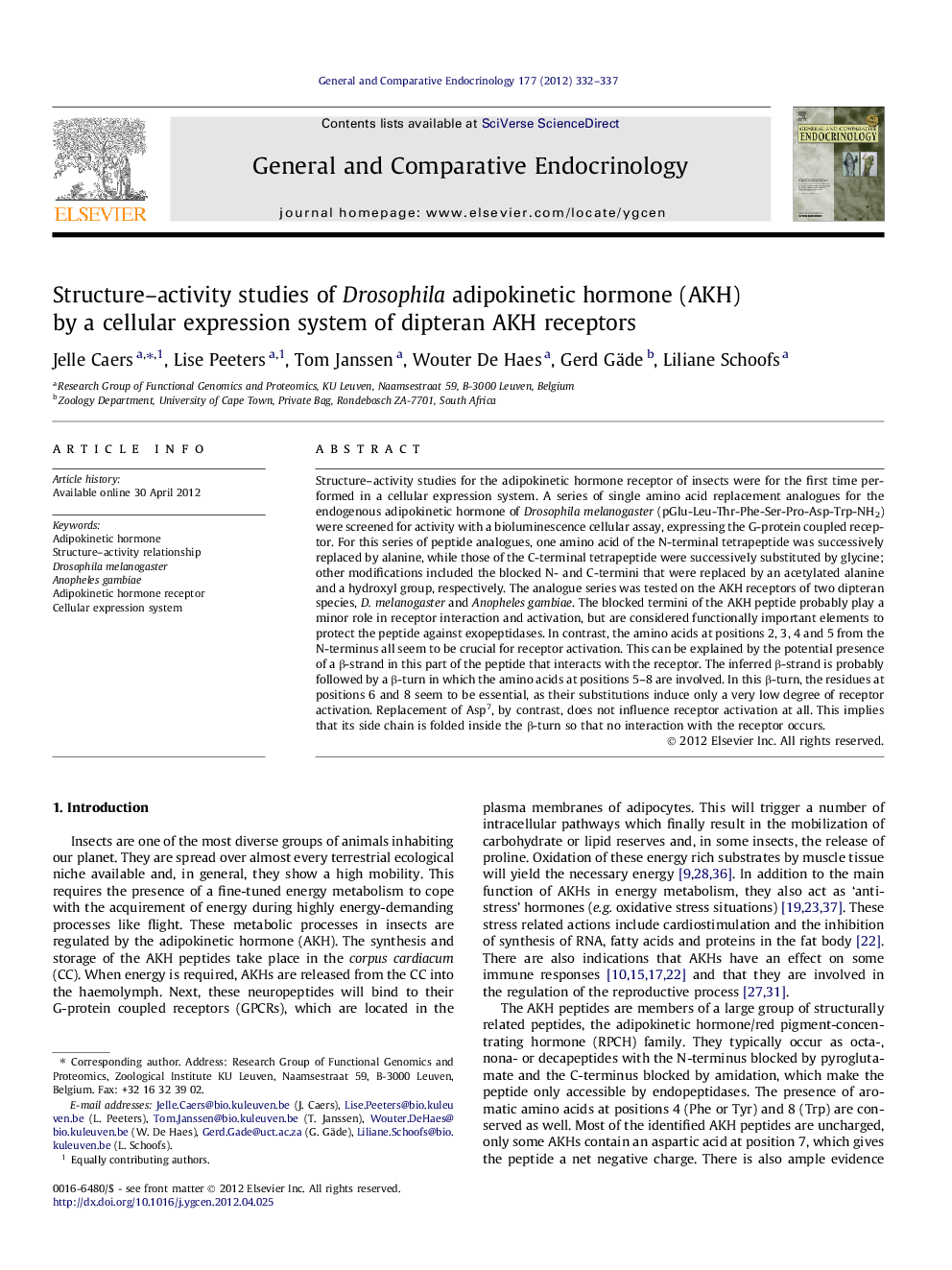| Article ID | Journal | Published Year | Pages | File Type |
|---|---|---|---|---|
| 2800628 | General and Comparative Endocrinology | 2012 | 6 Pages |
Structure–activity studies for the adipokinetic hormone receptor of insects were for the first time performed in a cellular expression system. A series of single amino acid replacement analogues for the endogenous adipokinetic hormone of Drosophila melanogaster (pGlu-Leu-Thr-Phe-Ser-Pro-Asp-Trp-NH2) were screened for activity with a bioluminescence cellular assay, expressing the G-protein coupled receptor. For this series of peptide analogues, one amino acid of the N-terminal tetrapeptide was successively replaced by alanine, while those of the C-terminal tetrapeptide were successively substituted by glycine; other modifications included the blocked N- and C-termini that were replaced by an acetylated alanine and a hydroxyl group, respectively. The analogue series was tested on the AKH receptors of two dipteran species, D. melanogaster and Anopheles gambiae. The blocked termini of the AKH peptide probably play a minor role in receptor interaction and activation, but are considered functionally important elements to protect the peptide against exopeptidases. In contrast, the amino acids at positions 2, 3, 4 and 5 from the N-terminus all seem to be crucial for receptor activation. This can be explained by the potential presence of a β-strand in this part of the peptide that interacts with the receptor. The inferred β-strand is probably followed by a β-turn in which the amino acids at positions 5–8 are involved. In this β-turn, the residues at positions 6 and 8 seem to be essential, as their substitutions induce only a very low degree of receptor activation. Replacement of Asp7, by contrast, does not influence receptor activation at all. This implies that its side chain is folded inside the β-turn so that no interaction with the receptor occurs.
► We performed structure–activity studies on dipteran adipokinetic hormone receptors. ► First time a cellular expression system was used to study adipokinetic hormones. ► Peptide termini not crucial for Drosophila melanogaster or Anopheles gambiae receptor activation. ► Amino acids 1–5 crucial for receptor activation and probably form a β-strand. ► Amino acids 5–8 probably form a β-turn, residue at position 7 not crucial.
